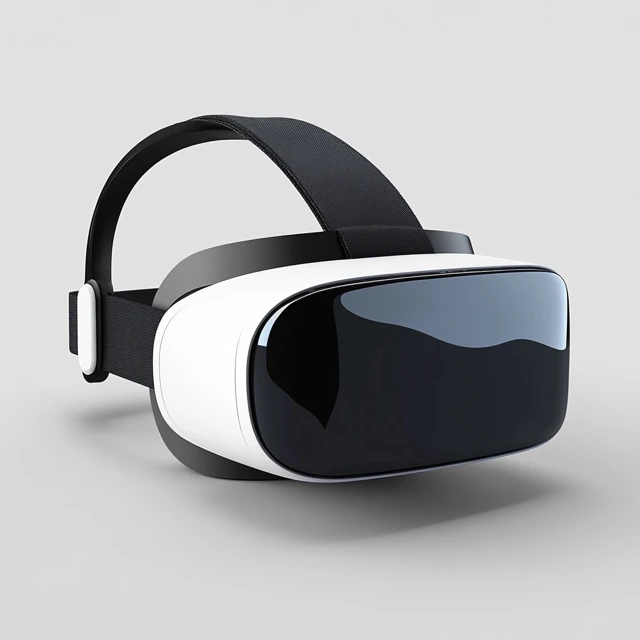Introduction: From Sci-Fi to Real Life
The concept of the “metaverse” has soared in popularity, with major tech giants and independent
developers promising a shared virtual universe that combines social interaction, entertainment,
commerce, and more. But what exactly is the metaverse, and how does it differ from simple virtual
reality games or chat apps?
In this guide, we'll break down the fundamental ideas behind the metaverse—why it matters,
how it's evolving, and how it might influence the way we work, play, and connect online.
Whether you're new to the term or have been following its progress, you'll find insights
into why the metaverse is heralded as the next big digital frontier.
1. What Exactly Is the Metaverse?
The metaverse can be thought of as a vast, interconnected network of virtual worlds
and digital spaces—an immersive environment where users, represented by avatars,
can socialize, create, and transact in real time.
- Persistent & Shared: Unlike standalone games or apps,
the metaverse is always “on,” with user-generated content and experiences
continuing even when you log off.
- Multi-Platform & Cross-World: It's not limited to one
company or environment—imagine hopping between experiences from different
creators, all seamlessly connected.
- User-Driven Interaction: Users can build virtual homes,
start businesses, or host events. Creativity thrives, as boundaries between
developers and participants blur.
- Economics & Ownership: Virtual currencies, digital
assets (like NFTs), and real-world finance can intersect, enabling new forms
of commerce or even entire digital economies.
In short, the metaverse aspires to be a unified digital cosmos—part social network,
part virtual playground, part new frontier for business and culture.
2. How It Differs from VR or Traditional Games
While the metaverse frequently overlaps with virtual reality (VR) and gaming,
it extends far beyond these realms:
- Platform vs. Application: A VR game is a self-contained
experience. The metaverse is more like an overarching platform, linking
many experiences under one digital “universe.”
- Hardware Agnostic: VR headsets like Oculus or HTC Vive
can enhance immersion, but the metaverse aims to be accessible via phones,
tablets, or PCs as well—bridging 2D and 3D interfaces.
- Social & Economic Layers: Interactions aren't confined
to gaming objectives. User-driven markets, communities, events, and real-time
collaboration define the broader metaverse scope.
- User Ownership & Persistence: Unlike typical game resets,
metaverse progress, inventory, or properties remain consistent across sessions,
forming persistent identity and assets.
Essentially, VR and gaming can be subsets or “portals” within the metaverse,
but the vision for the metaverse is a more expansive, interconnected ecosystem
of shared virtual experiences.
3. The Tech Behind the Scenes
Achieving a functional metaverse involves multiple technologies working in harmony:
- Real-Time Rendering & Networking: Graphically rich
virtual worlds require robust servers and low-latency connections, so users
experience smooth, synchronized interactions.
- Blockchain & Decentralization: Some metaverse projects
use blockchain to establish user ownership of digital goods, enabling cross-platform
assets or NFTs (non-fungible tokens).
- AI & Machine Learning: From moderating user behavior
to generating dynamic content, AI can lighten developer loads and create
evolving, user-customized experiences.
- AR & Mixed Reality: Bridging physical and digital
realms, AR or MR devices let users overlay digital data onto real-world views,
potentially merging real and virtual worlds seamlessly.
Although the ideal metaverse is platform-agnostic and open, competing companies
bring diverse approaches to building the foundational infrastructure and standards.
4. Real-World Applications: Beyond Gaming
While entertainment and gaming often lead the conversation, the metaverse
has many practical (and emerging) use cases:
- Virtual Events & Concerts: Artists hold live performances
in virtual venues where fans globally can attend, chat, and buy digital merch.
Some events attract millions of viewers/avatars simultaneously.
- Remote Collaboration & Work: Virtual office spaces let
colleagues meet as avatars, display 3D mockups, and brainstorm in real time—bridging
the gap left by video calls.
- Digital Education: Interactive classrooms in a metaverse environment
can simulate historical events, chemical reactions, or architectural tours,
engaging students more immersively.
- Social & Community Building: People form interest-based hubs,
hangouts, or entire “neighborhoods” in the metaverse, forging friendships or
hosting meetups from anywhere.
As the metaverse matures, expect more industries—healthcare, real estate,
tourism—to explore immersive experiences for training, marketing, or user engagement.

5. Metaverse Economics & Digital Assets
A significant metaverse draw is creating and owning digital items, which can be
bought, sold, or exchanged for real-world currency:
- Virtual Land & Property: Some platforms sell “plots”
of virtual land for users to build on, host events, or set up digital storefronts.
Values can rise or fall based on location popularity.
- Fashion & Avatar Customization: Digital outfits,
accessories, or unique avatar skins can become status symbols—particularly if
they're scarce or attached to brand partnerships.
- Crypto & NFTs: Blockchain-based currencies and tokens
facilitate secure, traceable ownership. NFTs let artists sell exclusive digital
art or items that retain verifiable authenticity.
- Services & Experiences: Users might offer design skills,
virtual event planning, or gaming coaching—charging fees or receiving tips
within the metaverse.
These digital economies might parallel or even intersect with real-life commerce,
creating new career opportunities and entrepreneurial ventures in the virtual realm.
6. Challenges & Concerns
Although the metaverse sparks excitement, it also raises valid concerns
regarding privacy, regulation, and equitable access:
- Data Privacy: More immersive interaction means capturing more data
(biometrics, movement, voice). Ensuring user consent and data protection is paramount.
- Content Moderation: Policing virtual spaces for hate speech, harassment,
or illegal activities becomes more complex in real-time 3D worlds.
- Monopolies & Walled Gardens: If a few large companies dominate
metaverse gateways, innovation could be stifled, or user freedoms limited within
closed ecosystems.
- Digital Divide: High-speed internet, VR hardware, or advanced devices
can be costly. Ensuring broad accessibility remains a challenge, especially globally.
Addressing these issues responsibly will be critical for the metaverse
to flourish as a positive, inclusive space.
Current Leading Metaverse Projects
| Platform/Project |
Focus |
Notable Features |
| Meta's Horizon Worlds |
Social VR, user-created environments |
Facebook integration, full VR experiences, event hosting |
| Decentraland |
Blockchain-based virtual world |
Virtual land ownership (NFTs), crypto-based economy |
| Roblox |
Gaming platform + user-generated content |
Massive user base, cross-platform, fosters custom game dev |
| Sandbox |
Voxel-style world with NFT assets |
Land sales, creator tools, crypto-based marketplace |
| Microsoft Mesh |
Enterprise & collaboration AR/VR |
Mixed-reality for work/meetings, sync with HoloLens |
Each platform approaches the metaverse from unique angles—some pivot on gaming communities,
others on enterprise collaboration or decentralized ownership.
Conclusion
The metaverse stands at the crossroads of gaming, social media, VR/AR, and decentralized tech,
promising a persistent digital realm that reimagines how we interact, create, and conduct business
online. While still in development, the foundational pieces—from advanced graphics to user-friendly
platforms—are emerging quickly, spurring excitement and speculation about what's next.
Whether you're curious about earning income in virtual worlds, hosting immersive events, or
simply exploring a new frontier of digital experiences, the metaverse represents a significant
leap toward bridging physical and virtual realities. Stay informed, experiment responsibly,
and watch as this concept continues to evolve into a truly transformative force in our
everyday lives.

